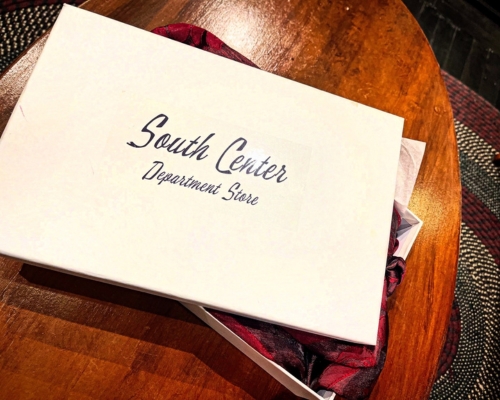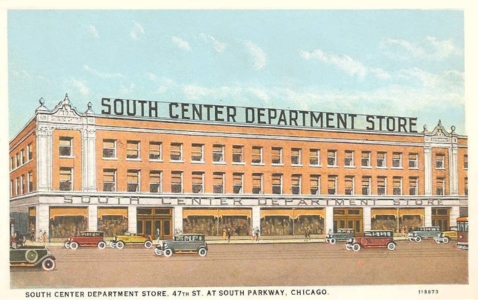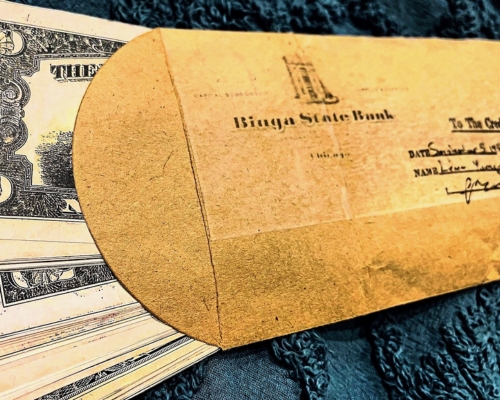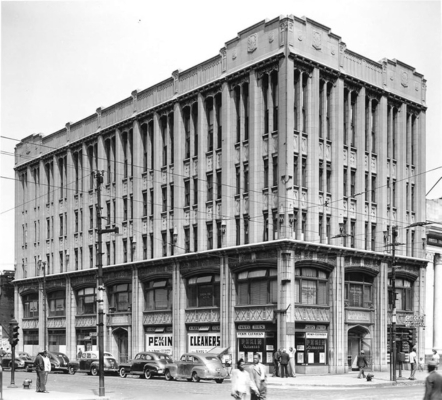Culture and Region As Told Through Props: A Raisin in the Sun
Lorraine Hansberry’s A Raisin in the Sun is a masterpiece of American realism, a moving portrayal of the multi-generational Younger family in their cramped kitchenette apartment on the South Side of Chicago. That can only mean one thing: hundreds (yes, hundreds!) of props.
Court’s Head of Props Lara Musard highlights some of the props below, illustrating how the details of this family’s life and circumstances are reflected in the items we see onstage.
South Center Department Store Box
Once she discovers that her family will be moving to Clybourne Park, Ruth Younger takes a break from packing to pick up those quality curtains with hand-turned hems at the three-story department store on the corner of 47th Street and South King Drive. From 1928 -1971, the South Center Department Store stood in bustling Bronzeville, selling everything from curtains, to “jewelry, hats, shoes, and handbags to paint, washing machines, and canary birds,” according to The Chicago Crusader.
When multimillionaire S.B. Fuller added the store to his business empire, the store became the nation’s largest Black-owned department store, rejecting racist hiring practices and enthusiastically recruiting Black employees and customers. Today, the Harold Washington Cultural Center stands at South Center Department Store’s former site.
Information sourced from The Chicago Crusader and Jazz Age Chicago.


The Binga State Bank Envelope
As Court’s staging of A Raisin in the Sun takes place in Anytime (to highlight the play’s universality and relevance beyond 1950s Chicago), we imagine Lena Younger receiving Big Walter’s life insurance payout – the cash to invest in the future of her children – from Binga Bank. Founded in 1908 by Jessie Binga, who made history as the first Black person to charter a privately-owned bank in Chicago, the bank provided access to “financial services for Black people living on the South Side” and opportunities for upward mobility, according to Chicago Southsider. Jessie Binga’s Arcade Building opened in 1929 at 35th and State and closed in 1930, making it the first Chicago bank closure of the Great Depression.
Information sourced from Chicago Southsider and Axios.

